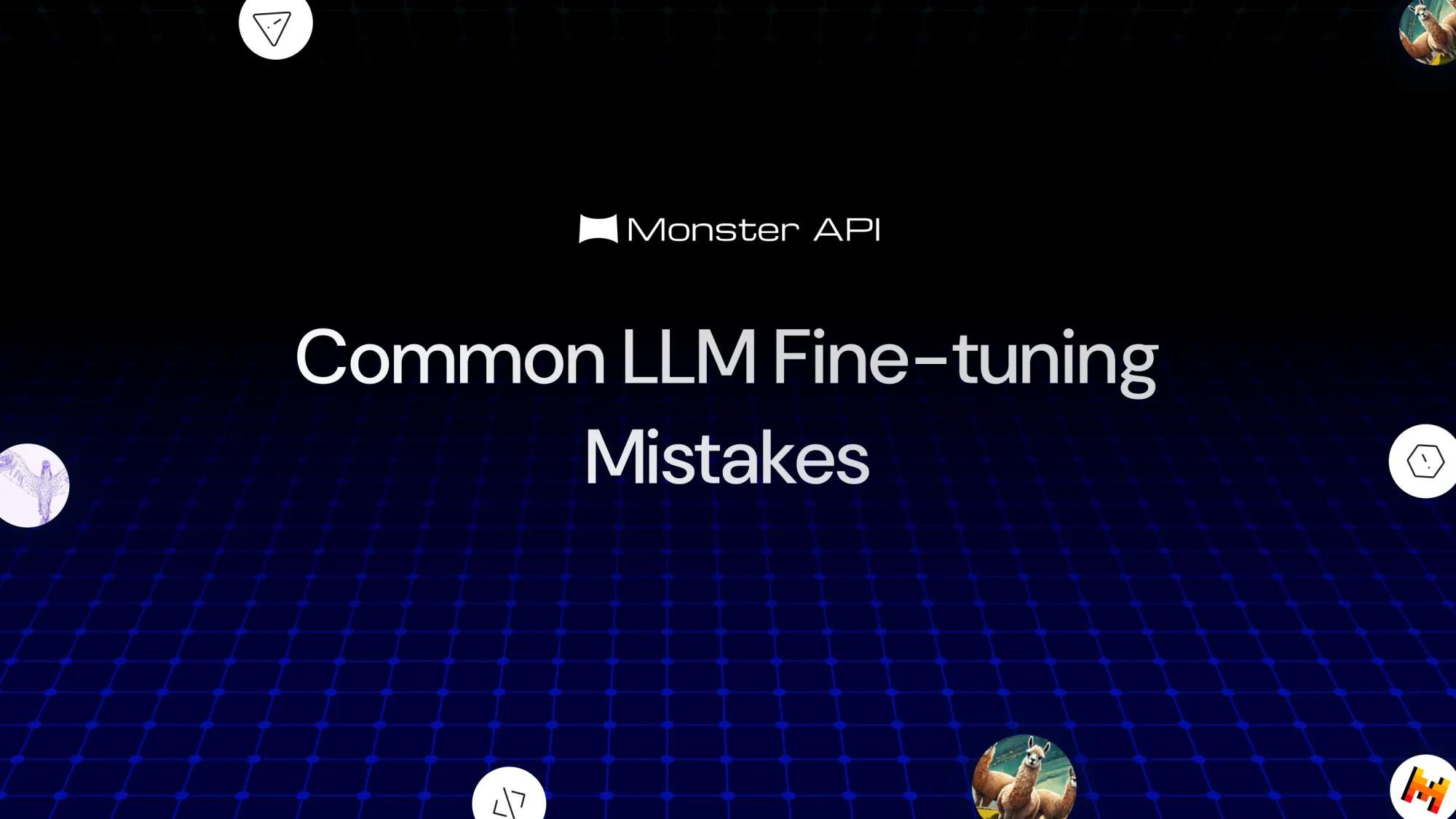Common Large Language Model Fine-tuning Mistakes to Avoid
Fine-tuning an LLM can be tricky if you don't have the right knowledge. Here are some common mistakes you should avoid while fine-tuning a large language model

Large Language Models (LLMs) like GPT-4 have been impactful to a range of industries. However, apart from basic level content creation, code generation, and problem-solving, the out-of-the-box LLMs can’t do much, especially if you want them to accomplish a highly niche task.
The only option is fine-tuning an open-source LLM to fit your use case. However, fine-tuning a large language model is complex, time-consuming, and expensive. The complex nature of fine-tuning causes users to make small mistakes that reduce the model’s performance.
In this blog, we will share some of the most common mistakes users make while fine-tuning a large language model. Let’s get started.
Common Mistakes To Avoid While Fine-tuning a LLM
Almost all the mistakes we’ve mentioned here come from a lack of proper knowledge. Let’s dive deeper into the challenges and their solutions.
- Insufficient or Poor-Quality Data
Your dataset is the most important aspect of fine-tuning. Many developers' datasets are either too small or lack diversity. Fine-tuning on a small or unevenly balanced dataset will result in models that overfit or fail to generalize.
This is where MonsterAPI’s Data Augmentation API comes in handy. The Data Augmentation API allows you to expand your dataset by creating new data samples based on existing ones. By using MonsterAPI’s Data Augmentation API, you’d get a more robust dataset which helps avoid overfitting, ultimately improving the model's performance.
- Not Using / Ignoring Pre-Processing Techniques
Pre-processing text data is often overlooked in LLM fine-tuning, resulting in inconsistent training results. Common issues include - removing unnecessary punctuation, stopwords, and irrelevant tokens.
Unclean data generates noise during fine-tuning, which can significantly reduce the model's performance.
- Ignoring Validation and Test Sets
A common mistake is failing to save a portion of your dataset for validation and testing. Training a model without validating it on previously unseen data produces models that perform poorly in real-world applications. Split your dataset into training, validation, and test sets to accurately monitor your model's performance.
- Overfitting to Training Data
Overfitting is one of the most serious risks involved in fine-tuning. It occurs when the model becomes overly tailored to the training data, rendering it ineffective on new, untested data. A balanced dataset is essential in this case, but regularization techniques like dropout and early stopping can also help avoid this trap.
- Misconfiguring Hyperparameters
Hyperparameters like learning rate, batch size, and number of epochs can significantly affect the outcome of fine-tuning. Misconfiguration causes models to train too slowly, fail to converge, or, worse, overfit or underfit.
- Neglecting Model Evaluation
Post-training evaluation is just as important as the fine-tuning process itself. Evaluating your model on diverse and representative test sets will reveal how well it performs in a variety of contexts. Developers often skip this, which can result in deploying underperforming models.
FAQs
- How much data is required for fine-tuning?
While there is no one-size-fits-all solution, more data typically leads to improved performance. However, quality takes precedence over quantity. Ensure that your dataset is both clean and relevant.
- Is it possible to fine-tune a model without using extensive computing resources?
Yes, you can use techniques such as few-shot learning, transfer learning, and even cloud-based solutions to overcome hardware constraints.
- How do I select the correct model size for my task?
Consider the complexity of your task as well as the resources available. Larger models have more power, but they also require more resources. Begin with a smaller model and scale up as needed.
- What are some indicators of overfitting during fine-tuning?
A significant gap between training and validation performance, as well as a consistently decreasing training loss with a plateauing or increasing validation loss, are strong indicators of overfitting.
- How often should I evaluate my model while training?
It is critical to conduct regular evaluations. Depending on your setup, evaluate the model after each epoch or every few iterations to ensure that issues like overfitting are detected in a timely manner.
- What if my dataset is too small?
MonsterAPI’s Data Augmentation API can generate additional data points by analyzing your existing dataset and expanding it with synthetic data, helping you overcome the issue of a limited dataset.
- How can I avoid overfitting during fine-tuning?
Overfitting can be avoided by using a diverse dataset, regularization techniques, and by leveraging data augmentation to introduce more variance into your training data.
- What are the most critical hyperparameters to tune?
Learning rate, batch size, and number of epochs are crucial hyperparameters that require tuning. MonsterAPI allows you to experiment with different settings and monitor their effects on model performance.
Conclusion
Fine-tuning an LLM is a good way to improve its performance for specific tasks, but it requires careful execution. You can save time and resources by avoiding common mistakes like insufficient data, improper pre-processing, and misconfigured hyperparameters.
Our platform simplifies this process by providing services like the Data Augmentation API, which increases dataset diversity and improves fine-tuning results. By avoiding these pitfalls, you can create more robust and reliable models for your specific use case.
For more tips and tools, see MonsterAPI's documentation and learn how our services can help you achieve better fine-tuning results!

